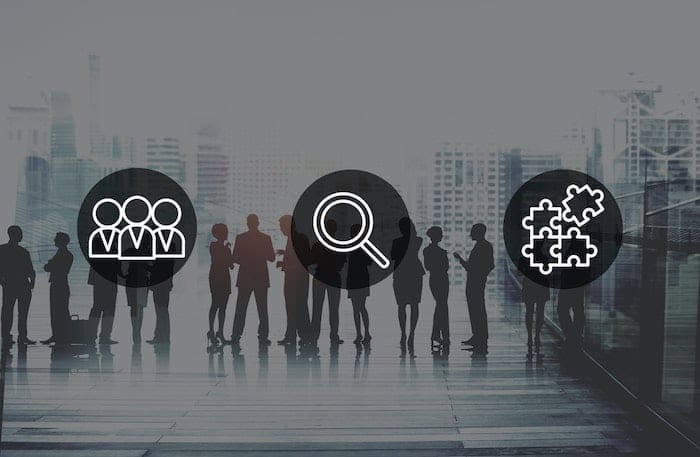It was not long before organizations used manual methods to track employee performance. But, it was quite tedious and time-consuming, as it required managers to track the performance of multiple employees and provide a status report to senior management. Over the years, organizations have adapted to an employee performance management system that have had the capability to track employee performance annually. These systems also helped in overcoming the challenges of conventional systems like manual processing, manager bias, and time required for performance management. But there were still a lot of flaws that led to employee disengagement, loss of productivity, and reliance on the personal judgment of managers.
The introduction of advanced and performance-driven employee performance management systems has overhauled the entire process. Organizations now rely on systems that help in measuring employee performance at regular intervals and can provide innovative solutions to complex human resource challenges. An HR performance management system takes into consideration multiple factors of organizational performance and provides actionable insights for improvements. The system is scalable, organized, and offers multiple benefits, such as increased employee engagement, reduced turnover, reduced employee dissatisfaction, strategizing organizational goals, increased revenue, and focusing on DEI initiatives.
Before we jump to the characteristics of employee performance management solutions, let us understand the problems that traditional management systems encounter.
Problems With the Traditional Performance Management System
The purpose of having a performance management system is to create a skilled and motivated workforce aligned with organizational goals. With the changing business dynamics, increased global competition, and green initiatives taken up by organizations, it has become imperative to have a diverse and inclusive workforce that is able to take up business challenges.
The different types of performance management systems are helping organizations overcome the challenges they faced with traditional systems. Let’s discuss the problems faced by organizations.
Traditional Performance Management is Time Consuming
A report by CEB talks about the time-consuming process of performance review conducted by organizations annually. It shows that a manager spends an average of 210 hours a year in the process, and an employee devotes 40 hours. Cumulatively, it accounts for thousands of work hours that get wasted in the inefficient process of performance review.
Ratings do not Reflect the Real Performance of Employees
The same report by CEB shows that 9 out of 10 employees are not satisfied with the performance review process. A majority of employees are dissatisfied with the ratings they get from their managers. Ratings are based on the most recent performance and don’t take into account the complete review of employee activities.
The Process is Laborious and Expensive
The countless number of hours spent in the performance review process adds to the lost revenue and administrative costs incurred in conducting the process. A report by Deloitte pointed out that their performance review process accounts for an investment of 1.8 million hours for the whole firm. Many small and medium-sized businesses are already overworked and need money for expansion and growth. Traditional performance management systems put extensive pressure on managing expenses and maintaining an efficient workforce.
The Process Cannot Accurately Measure Performance
Seeing the inaccuracy and insufficiency in measuring employee performance, many organizations are starting to look for better performance management measures. A report by Gartner highlights that 81% of HR leaders are making changes to their performance management systems. Many leading business enterprises, like Accenture, Deloitte, Microsoft, Gap, and Adobe, have switched to an entirely new people management process that saves time and leads to better business results.
Characteristics of Performance Management System
A progressive performance management system is one that helps in motivating the employees and offers improvement plans to those with learning gaps. Moreover, it focuses on maintaining a higher engagement level and enhancing the skills of employees through frequent check-ins, constructive feedback, and accurate performance measurement.
While selecting the best performance management system for the organization, it is important to understand the following characteristics of employee performance management solutions. These traits help in making a performance management process reliable, continuous, and data driven.
Fair and Accurate
A major issue with the traditional performance management system is the personal bias and perspectives of managers, which inhibits the fairness in the process. Fair and accurate performance review is done by involving multiple people in the review process of an employee.
A modern performance management system involves 360 degree feedback and reviews that incorporate feedback from multiple partners. Such a review process eliminates the personal bias and perspectives of managers and takes anonymous feedback from the concerned people.
The System Must be Efficient
An efficient performance appraisal system establishes and communicates goals and performance expectations to employees. It helps in reducing the manual efforts and overall time required to conduct the performance review process. Thereby providing accurate results for taking actions.
Continuous, Flexible, and Intuitive
As organizations have started embracing automation, they look for performance management systems that can simplify complex tasks and are flexible enough to accommodate changing business dynamics. Performance management systems are continually evolving with technology. They offer intelligent insights based on the input data and solve multiple technical problems that is difficult for human resource managers to comprehend.
The System Must Focus on Employee Development
The purpose of implementing performance management tools is to enhance the performance of employees. It is achieved by understanding their current skill-set, challenges, engagement level, and opportunities, and matching them with the organizational objectives.
An effective system focuses on imparting employee development plans for those employees that are lacking in optimum performance and rewarding those with exceptional performance. The system helps in gathering the employees’ information and creating a well-defined learning path for them. Even the measurement of employee development results and ROI is easier with an HR performance management system.
Aligned Towards Organizational Goals
The performance of employees is directly linked with the achievement of business goals. If the workforce is not aligned to the organizational objectives then it becomes difficult to accomplish organizational goals . A performance management system aids in aligning the employee goals with organizational strategy.
It can be achieved by setting goals that reflect the business strategy of the company. It requires taking every department and business unit into consideration while crafting the goals. Once the goals are designed, leaders have to cascade the goals down to every manager and employee in the organization. The last step is to review, monitor, and measure the success of these activities.
Aligned With Organizational Culture and Values
A report by Deloitte on core beliefs and culture found that “94% of executives and 88% of employees believe a distinct workplace culture is important to business success.” Organizational culture and values constitute the vision, mission, business strategy, and day-to-day interactions of employees with leaders, managers, and peers.
Employees are able to build a strong relationship and a sense of bonding with the organization when they feel like they are a part of the culture. A performance management system drives engagement, productivity, and development by undertaking multiple initiatives. It helps in building a closer relationship between an employer and their employees. It helps in creating a sense of purpose, achievement, and involvement among employees within the organization.
The System Must Help With Goal Setting and Tracking
A performance management system helps in setting SMART (Specific, Measurable, Achievable, Relevant, Time-bound) goals. Research shows that setting goals in collaboration with employees increases accountability and also align individual goals with organizational goals. The check-in feature of the performance management system also helps in tracking the overall performance of team members. Thereby enhancing transparency in the review process.
Integrates All Aspects of Employee Development
Employee development is a cumbersome process. It involves various parameters, like skill development, job rotation, job enrichment, mentoring and coaching, and lateral moves. As organizations grow in size, employee development gets more challenging. Thus, it requires a thorough analysis of the workforce and creating a plan for every employee.
Using employee performance management solutions can simplify the tasks of employee analysis, learning path creation, execution, monitoring, review, and success measurement. Managers can use the performance review tools to quickly identify employee development opportunities and quickly start the process.
Customization, Security, and Integration
Integration with other HR technologies and tools is a key feature of performance review software. Because today’s businesses utilize various technologies and tools for employee management, it is important for software to seamlessly integrate and interact with other platforms to provide a better employee experience.
Specific business demand are met by tailoring and customizing performance management software. It also ensures data security to meet global business standards.
Supports Learning Culture in Organization
Creating a learning environment contributes towards the growth of an organization. It helps in increasing employee productivity, engagement, ownership, and interpersonal relationships. Developing a learning culture is a long process. It requires collaboration from all the stakeholders of an organization.
Organizations can shift toward a continuous learning process by adopting an intuitive performance management system. The focus should be on the following aspects:
- Providing every employee with the opportunity to actively participate in their learning process
- Rewarding and promoting continuous learning
- Providing resources and tools for employee learning and development
- Encourage social learning within your organization.
- Providing coaching and mentoring sessions to employees
- Measuring the success of learning activities and reviewing the culture at intervals
By taking into account the above-discussed characteristics, organizations can select the most effective performance management system based on their business needs and dynamics. We hope this article has answered your queries regarding the traits of performance management systems.
Explore the complete range of features of performance management systems, schedule a demo with Engagedly.
Request A Demo







